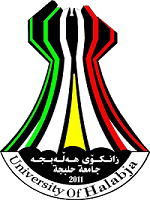Verb Inflection Categories (Tense, Person, Aspect, Mood) Review
DOI:
https://doi.org/10.32410/huj-10170Keywords:
Verb, Tense, Person, Aspect, MoodAbstract
By evaluating the analysis and arguments of both groups, we identify the inflectional categories as the following:
Tense: It is a syntactic category of verbal inflection which indicates the time. It has two types, which are:
Past: its morphemes and allomorphs are /-a/, /y\i-/, /w\u-/, /d-/, /t-/.
Present: its morphemes and allomorphs are /de-/ and /e-/.
However, “time” is a physical issue which is different from “tense”. It means the issue is mostly semantic rather than syntactic. In Kurdish language, we can identify the tense boundaries and clarify their times by dictionary lexemes.
Hatm : dwene hatm : agar hatm.
Dem : wa dem : sbai dem.
Person: whether singular or plural, as a verbal inflectional category, is a syntactic segment of verb. In the verb structure, it agrees with the verb according to its type and time, either as simple agreement or complex agreement.
Mn tom nard: tom nardit: nardmit
Aspect: each ofthe linguists Muhammed Mahwi, Wrya Omar Amin and Mahmud Fathulladivided aspect into perfective, imperfective and progressive. However, through analysis and discussion of examples, it has been obvious that aspect is of two types in Kurdish language.The researcher follows this latter conclusion:
a. Perfective
b. Imperfective (Continuous), Progressive (close) and far.
Tense and aspect, which are verbal inflectionalcategories, are parts of tense. Tense determines past and present, but aspect determines its perfectness and imperfectness.
Perfective and imperfective(continuous, progressive).
Mood:indicative, uncertainty (conditional, subjunctive and uncertainty)
The researcher uses these principles and conclusions in his PhD dissertation to carry out his investigation.
References
١- ئهوڕهحمانی حاجی مارف، ڕێزمانی كوردی، بهرگی یهكهم، وشهسازی، بهشی پێنجهم -كردار-، سلێمانی، چ.سهردهم 2000
٢- محەمەدی مەحویی: پێڕەوی ئەرگەتیڤیی كوردیی، پەسنكردن و بەراوردكاریی، گۆڤاری زانکۆی کۆیە، ٣١/ ٢٠١٤
٣- محەمەدی مەحویی، بنەماكانی سینتاكسی كوردیی، بەرگی یەكهەم، زانکۆی سلێمانیی، ٢٠١٠
٤- محەمەدی مەحویی، شكانەوەی كردار،زانکۆی سلێمانیی، ٢٠١٠
٥- محەمەدی مەحویی، مۆرفۆلۆژیی و بەیەکداچوونی پێکهاتەکان (مۆرفۆلۆژیی کوردیی)، بەرگی یەکەم، زانکۆی سلێمانیی، ٢٠١٠
- A Kurdish Grammar, Descriptive Analysis of The Kurdish of Sulaimaniya, Iraq, by: Ernest N .McCarus, Spoken Language Services, Inc, American Council of learned societies, New York, 1958
-Aspects of The Verbal Construction in Kurdish, Waria Omar Amin, London University, Haji Hashm Printing House, 2011.
- Encyclopedia of Ancient Greek Language and Linguistics, Georgios K. Giannakis. 2013
- Kurdish Dialect Studies-1, by D. N. Mackenzie, London Oxford University Press, 1961.
- The Tense and Aspect system in Kurdish, Mahmoud Fathulla Ahmad, A Thesis Submitted for the Degree of Doctor of Philosophy at The School of Oriental and African Studies, University of London. Linguistic Department. 2004.
Downloads
Published
Issue
Section
License
Copyright (c) 2018 Muhammad Abulfattah Saeed Mahwi, Aryan Sdiq Aziz

This work is licensed under a Creative Commons Attribution-NonCommercial-NoDerivatives 4.0 International License.
Authors who publish with this journal agree to the following terms:
- Authors retain copyright and grant the journal right of first publication with the work simultaneously licensed under a Creative Commons Attribution License [CC BY-NC-ND 4.0] that allows others to share the work with an acknowledgment of the work's authorship and initial publication in this journal.
- Authors are able to enter into separate, additional contractual arrangements for the non-exclusive distribution of the journal's published version of the work (e.g., post it to an institutional repository or publish it in a book), with an acknowledgment of its initial publication in this journal.
- Authors are permitted and encouraged to post their work online (e.g., in institutional repositories or on their website) prior to and during the submission process, as it can lead to productive exchanges, as well as earlier and greater citation of published work (See The Effect of Open Access).






